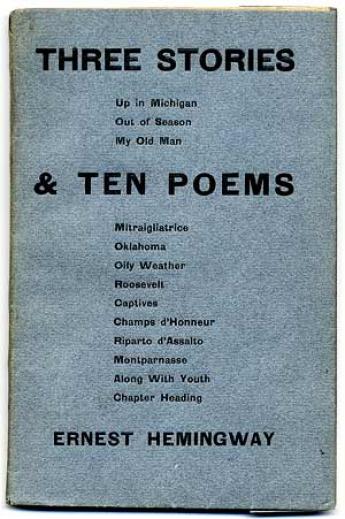Antiquarian Booksellers' Association of America
First Issue/State and "Points"

By Allen and Patricia Ahearn
In the case of a number of books, particularly those published before 1900, one can differentiate between the first and later printings only by being aware of the changes made between printings. These changes can be in the text, the type used, the number of pages, the dates in the ads, or the type of binding (cloth, leather, boards, wrappers). In some cases the authors may have wished to make changes in the text themselves, or the publishers may have run out of a certain color cloth for the covers and switched to another color. These differences are known as the "points." The most common points are typographical errors that are discovered and corrected between printings or even midway through the first printing.
When these changes occur, the points indicate the first issue or first state of the printing. The Glossary (elsewhere on this site) includes a discussion of these terms, but it is worthwhile to quote P. H. Muir's Book-Collecting as a Hobby, where the difference between issues and states is summarized as follows:
An "issue" is caused by some change ... after some copies have already been circulated, (while) a "state" is caused by a ... change before any copies of the book have been circulated.
The difference in value between issues or states can be great. For instance, the first issue of Dylan Thomas's 18 Poems (1934) has a flat spine, a leaf between the half title page and the title page, and the front edge roughly trimmed; the second issue (1936) has a rounded spine, leaf (ads) added, and front edge cut evenly. The difference in value between the first and second issue of that book is $2,000 or more.
The Quill & Brush was established in 1976 as an outgrowth of a part-time business run by Allen and Patricia Ahearn who started collecting and cataloging books in the early 1960s. The Ahearns have over 45 years of experience in the field. The Quill & Brush specializes in first editions of literature, mystery/detective fiction and poetry, as well as collectible books in all fields. Allen and Pat Ahearn are the authors of Collected Books: The Guide to Values (Putnam: 2002), and Book Collecting 2000 (Putnam: 2000).
The article is published on the www.qbbooks.com and is presented here by permission of the authors. Thank you very much.
